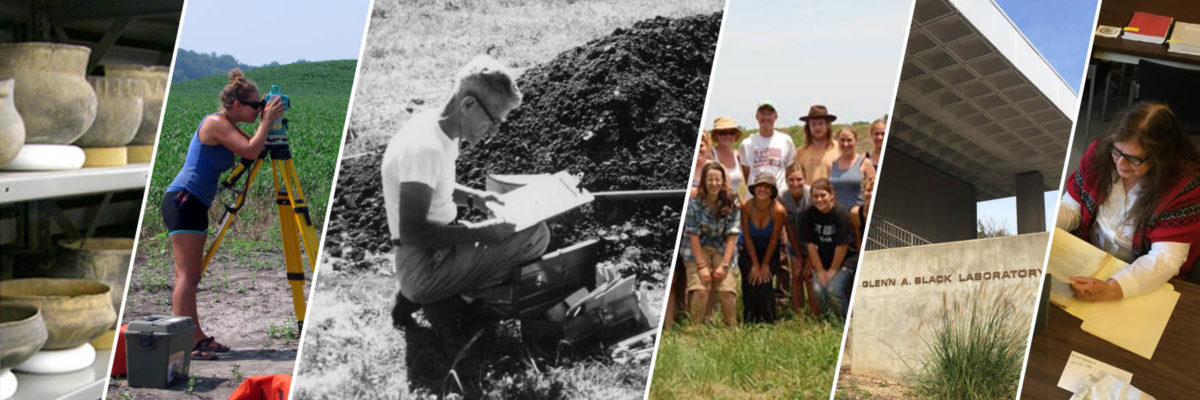by Lauren Schumacher
I’ve spent most of the year getting to know the various Wylie House collections. After being introduced to the Wylie House through the summer field school, I’ve started to process the artifacts rescued during the construction of the education center at Wylie, helped process the artifacts collected during the field school, and completed a Wylie ceramic analysis project for a class in laboratory methods in archaeology.
I started processing the collection at Wylie last semester by roughly sorting the artifacts into their types and cleaning them. Once they were sorted into the broad categories of glass, metal, and ceramic, I started to further sort the ceramics into categories based on the type of ceramic, decorations, and type of vessel sherd (rim, body, or base). Once the sorting is finished, we will be able to start labeling the artifacts and entering them into the database. The system for labeling will be a little less complicated than the one we have been using for the summer excavation collection, since these artifacts weren’t formally excavated. Working with the ceramics has been fun, but I’m looking forward to finishing the sorting and start the labeling process as it will be a nice change of pace.
From this work at Wylie, labeling the summer excavation artifacts has been interesting since I’ve been able to recognize many of the pieces through my other work with Wylie artifacts. In particular, there is a set of glass tumblers that I first saw in Sherry’s collection that continue to pop up in the glass fragments collected during the summer excavation. Finding these surprising little connections has definitely made the labeling of hundreds of flat glass fragments more exciting. With that being said, I am looking forward to being done with the glass and starting to label the metal artifacts. After seeing a collection all the way through from excavation to labeling, I’m excited to get back to work on the Wylie collection and see it completely processed after being neglected for so many years.

